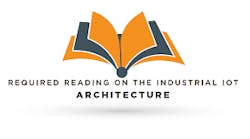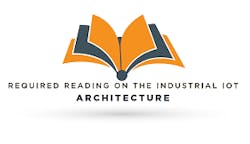Reference Architecture lays foundation for the IIoT
“For the Internet of Things to reach the predicted install base of 50 billion things by 2020, developers need to be able to connect and scale systems quickly,” said Shi-Wan Lin, co-chair of the Industrial Internet Consortium Technology Working Group and principal engineer with the Strategy and Technology Office, Internet of Things Group, Intel, upon release of version 1 last year. “The Industrial Internet Reference Architecture has broad applicability across industrial and other IoT systems to drive that scalability and interoperability within the industry.” The full 102-page document is available for download at the Industrial Internet Consortium’s website at http://www.iiconsortium.org/IIRA.htm.
The Industrial Internet Reference Architecture helps place existing and emerging standards into a common structure, making it easier to quickly identify gaps that need to be filled to ensure interoperability between components. “As a global, non-standard-setting organization, we see this as another step towards achieving global standards through collaboration,” added Stephen Mellor, chief technology officer, Industrial Internet Consortium.
The Reference Architecture document outlines key characteristics of Industrial Internet systems, various viewpoints that must be considered before deploying an Industrial Internet solution, and an analysis of key concerns for the Industrial Internet including security and privacy, interoperability, and connectivity.
Improvise and overcome
Of particular note are the IIRA’s forward-looking descriptions of increasingly capable systems that are not only integrable but interoperable and ultimately composable, revealing both the challenge and potential of next-generation IIoT solutions. Take, for example, the topic of resiliency and the document’s development of a military command-and-control metaphor that follow.
Resilience is more than just recovering quickly from pressure, the report’s authors write. To be resilient is to be able to take “bitter circumstance in stride” and still “get the job done.” It might cost more or not be done as well had less (intentional or unintentional) adversity been present, but it will be done. Resilience is a superset of fault tolerance—and very much related to autonomic computing notions of self-healing, self-configuring, self-organizing and self-protecting.
No other institutions are more involved directly in bitter or adversarial circumstances than the military. No other institutions have a greater dependence on resilience of its organizations and operations to survive and to succeed. Therefore, the current thinking of the military on resilience and the lessons they have learned in the past will inform us on how to better effect resilience within Industrial Internet Systems (IISs).
Among the lessons to be learned by IoT system developers from military command-and-control structure and doctrine:
• Expect to be disconnected from authority. Mechanisms must be in place to allow the mission to succeed, so some level of decision making on the edge is a requirement. In an IIS, control elements for critical operations must not be dependent on network availability.
• Good decisions are not made in a vacuum. Communicate commander’s intent so that units in the field understand how their actions fit the bigger picture. The ability to alter plans locally provides a lot more flexibility and resiliency. The implication for IISs is that local control elements must know more than just their own part of the plan. They must have a bigger picture of what they are responsible for that allows them to reconfigure their operation and maintain mission-level performance when under stress.
• Peer-to-peer communication is more important than hierarchical communication. Changing plans and developing new tasks requires the disconnected units to engage in all parts of command-and-control jointly with their neighbors so they can jointly succeed within the constraints of the commander’s intent. Once that intent (and an initial plan based on the strategically available resources) is communicated, little more needs to be said from higher chain of command until the mission is completed. In IISs, this suggests that components must be autonomous, and able to act independently based on the plan and information from other independently operating components nearby.
• Take advantage of the hierarchical network to optimize all parts of command-and-control. Do not use the connectivity, when available, to centralize decision making but distribute information to ensure that whole network becomes aware of changes to local plans so they can get an early start on changing too. In IISs, this suggests that components must be aware of the behavior of other components. Build a system that does not need the network to work—it only needs it to optimize. This is a given in the ‘fog of war.’ In IISs, this partly follows from being able to run disconnected. However, some functions such as safety, should never be compromised just because of a network failure.
“The Industrial Internet Reference Architecture is an important first step toward establishing new IoT capabilities in the industrial space,” says Bradford Miller, senior scientist at GE and co-chair of the IIC Technology Working Group. “With the IIRA, we are creating new ways to organize industrial applications that move toward a usage-driven, rather than a design-driven approach. We believe collaboration is essential to achieving Industrial Internet success, and organizations like the IIC help drive best practice sharing through global partnerships with industry leaders.”
The Industrial Internet Consortium’s Industrial Internet Reference Architecture can be downloaded in its entirety from the IIC website at: http://www.iiconsortium.org/IIRA.htm.




